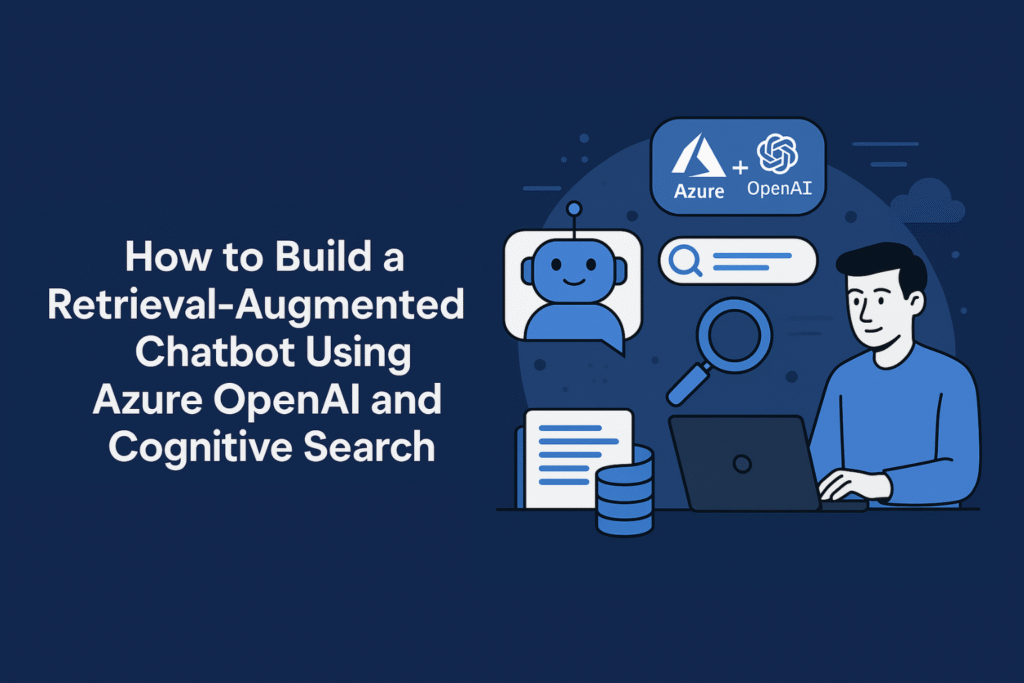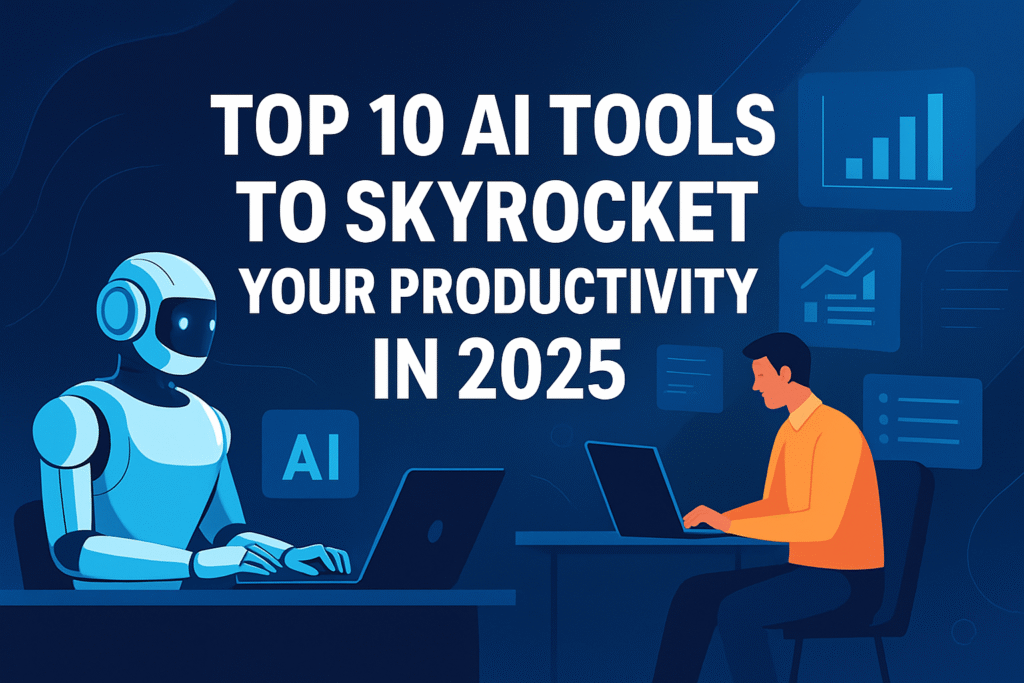
Introduction
The age of intelligent virtual assistants is here, but generic chatbots often fall short when it comes to answering questions about your business-specific data. Whether you’re in IT, HR, legal, or customer service, you need chatbots that can leverage your own documents to respond accurately and efficiently.
Enter the Retrieval-Augmented Generation (RAG) chatbot — powered by Azure OpenAI and Azure Cognitive Search. This guide will show you how to build one from scratch, using Microsoft’s trusted AI infrastructure, helping you automate responses while keeping control over your data.
✅ Suggestion: Read our guide on the Top 10 AI Tools for Skyrocket Your Productivity
What is a Retrieval-Augmented Chatbot?
Unlike standard GPT-powered bots that rely solely on pre-trained language data, a Retrieval-Augmented Chatbot fetches relevant information from your data sources, such as PDF manuals, SharePoint documents, or FAQs, before forming a response.
This is made possible by combining:
- Azure OpenAI Service (which gives you access to GPT-4)
- Azure Cognitive Search (which indexes and retrieves your internal documents)
Together, they provide answers that are not just smart, but also accurate, secure, and specific to your organization.
Why Azure for Building AI Chatbots?
| Feature | Azure OpenAI | Azure Cognitive Search |
|---|---|---|
| Language Understanding | Access to GPT-4 | — |
| Document Retrieval | — | Index and search files |
| Integration | API-based | Connects easily with Azure services |
| Compliance | SOC 2, GDPR | SOC 2, ISO Certified |
| Performance | Scalable APIs | Semantic Search with fast indexing |
By using Azure OpenAI in combination with Azure Cognitive Search, you’re building on a secure, enterprise-grade, and scalable foundation.
🔗 Azure OpenAI Overview – Microsoft
🔗 Azure Cognitive Search Documentation
How to Build It (Step-by-Step)
Step 1: Prepare and Upload Your Documents
- Convert your internal files (PDFs, DOCX, etc.) into machine-readable formats.
- Upload them to Azure Blob Storage.
bashCopyEditaz storage blob upload --container-name docs --file ./docs/hr-policies.pdf
Step 2: Create an Azure Cognitive Search Index
- Navigate to Azure Portal
- Create a Search Service
- Add a Data Source linked to your blob container
- Define the index schema (text fields, metadata)
- Run the indexer to extract and chunk content
Enable Semantic Search for better understanding and ranking.
Step 3: Deploy GPT-4 via Azure OpenAI
- In the Azure Portal, search for Azure OpenAI
- Create a new resource and deploy the GPT-4 model
- Get your API key and endpoint
You’ll use this key to send queries and get responses from GPT-4.
Step 4: Connect Everything (RAG Logic)
In your backend app (Python, Node.js, or .NET), do the following:
- Accept the user’s question
- Query Azure Cognitive Search using the question
- Collect the top 3–5 relevant content snippets
- Pass the context + original question to GPT-4 via Azure OpenAI API
- Return the generated response to the user
pythonCopyEditprompt = f"Answer the following using the context:\n{retrieved_data}\n\nQ: {user_query}"
Step 5: Test and Deploy
Use Postman or a web app (built with React, Flask, etc.) to test your bot. Then deploy it to Azure App Service or Azure Static Web Apps.
✅ Suggestion: Top 10 Generative AI Tools
Best Practices for Retrieval-Augmented Chatbots
| Challenge | Recommendation |
|---|---|
| Irrelevant context | Use vector-based search for semantic similarity |
| Long documents | Split content into 500–800 token chunks |
| Slow response | Implement caching for repeated queries |
| PII exposure | Mask or redact sensitive info during indexing |
Use Cases for Businesses
- Customer Support Bots: Provide accurate responses using indexed help center docs
- HR Assistants: Help employees navigate benefits, policies, and PTO
- Legal Compliance Assistants: Retrieve clauses and compliance guidelines quickly
- Enterprise Q&A Portals: Centralize access to internal knowledge for all departments
How It Works
User Query → Cognitive Search → Retrieve Chunks → Send to GPT-4 → Response
Suggested Image Alt Text: Flowchart of Retrieval-Augmented Chatbot Using Azure OpenAI and Cognitive Search
Want us to generate this image for you? Just say the word!
Final Thoughts
Building a retrieval-augmented chatbot using Azure OpenAI and Cognitive Search empowers your business to create intelligent, customized AI assistants that actually know your company.
By following this guide, you can deliver human-like, context-aware answers without compromising privacy or compliance — all using Microsoft’s secure infrastructure.
💬 Want more tutorials like this? Subscribe to GetPromptify for Daily AI guides

